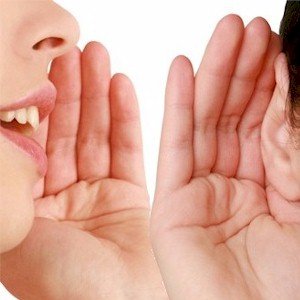 There’s another distinct barrier of passage which needs to be crossed when it comes to hearing aids, which is a stage of acceptance and the realization of one coming to grips with old age.
There’s another distinct barrier of passage which needs to be crossed when it comes to hearing aids, which is a stage of acceptance and the realization of one coming to grips with old age.
Even in the countries where hearing aids are covered under a national health program, it’s estimated that just one third will choose to wear one, the remainder in denial.
This a ridiculous notion since the majority of hearing aids which are available these days are hidden and barely visible.
Wearing a hearing aid really doesn’t make you look older, they’ll just make you hear better. But choosing not to wear one and then constantly saying “What?” does is it contributes towards you looking older.
It’ll not only make you look old, but aloof and absentminded as well. It becomes extremely difficult to look alert when you’re not able to hear what’s being said.
The High Cost Of Hearing Aids
But for the majority, it’s the cost that’s the biggest obstacle. A good hearing aid that’s usually customized can cost anywhere from $2000 to $7000. So there’s no question that proper hearing is out of reach for the majority of those who can’t hear.
One of the biggest issues when it comes to these high costs is that there’s usually no adequate or extremely poor medical or health insurance coverage to them for redemption.
A pair of hearing aids, for instance, that costs $3000 each, some of the private insurance companies will just reimburse around 10% percent, or will offer no reimbursement whatsoever.
The majority of medicare systems won’t reimburse for hearing aids unless there’s a specific disease or injury resulting in the hearing loss, such as significant damage like a brain tumor.
Why Are Hearing Aids So Expensive
The initial shock is always the high cost of these hearing aids for the majority of people. Some will blame the hearing aid dispensers or the audiologists for these costs.
It becomes extremely easy to understand the distrust since an investigative source has revealed that a basic hearing aid could be manufactured for as low as $60.
Despite the initial $2000 to $7000 “price shock” figure, the actual cost of these hearing aids has actually dropped when compared to the actual rate of inflation, some will argue.
There are sources which notes that the direct factors which contributes towards the high cost of these devices, includes:
• The extremely high cost of research and development that’s required to develop them
• The time and expertise that’s spent with and by the audiologist to fit the exact proper hearing aid to the particular needs of the user
Once averaged over the lifespan of these delicate instruments, which can be around 3 to 5 years or longer, the cost per day of a pair of functional hearing aids is down to around 3 dollars a day, another argument.
Some would go as far as pointing out that the gift of hearing is cheaper than a designer coffee, but any justification doesn’t really equate, as it does take a big bite out of the users income, those especially with limited budgets.
The High Cost Of Manufacture
The majority of the cost of these hearing aids goes into research and development, rather than the cost of manufacture themselves.
Although they’re getting significantly lower at all times, the process of manufacture is significantly more expensive than it is for most consumer electronic gadgets, such as a smartphone, but serves a more important purpose.
The reason according to experts is that the actual market for hearing aids is around 5% percent, when compared to other manufactured electronic devices, such as a smartphone, which is closer to 35% to 65% percent of the market.
So the classic supply and demand goes into effect. There’s really no known actual figure of how many actual individuals who could benefit from the use of a hearing aid, but it’s certainly not 50 million.
Most who may be experiencing mild to moderate hearing loss are also able to manage without the use of them. There are however many more who’ll want a new smartphone once every three years or so.
The cost then equates to the price of mass manufacture. Once a cellphone manufacturer develops a new phone, they’ll usually order up to 5 million chips and transistors in bulk to manufacture them.
A hearing aid manufacturer on the other hand will order just 10,000 or so. So you really can’t compare the two since they’re on completely different scales.
The Blunt As Usual Goes To The Consumer
Those who can’t afford these premium hearing aid devices may instead opt for the lower cost of other personal amplification methods.
These generally may work well for those with mild to moderate hearing difficulty, who wants to hear the television better. One of the dangers is that if they fail to work, the user may then give up on hearing aids altogether.
There’s also new technology which is filtering into the hearing aid market. Some methods which may make hearing aids more affordable, which will provide competition to the current hearing aid manufacturers, which should lower prices.
As for now, it’s the initial sticker shock of these hearing aids and that generally, they’re not usually covered by insurance. It’s not a very good public health policy since the majority of hearing aid users are mostly seniors with limited incomes.
The costs which goes into the treatment for conditions along with the diseases which may stem from hearing loss that’s untreated, in access towards education for those who can’t afford adequate hearing aids, far outweigh the cost that hearing aids would incur.
